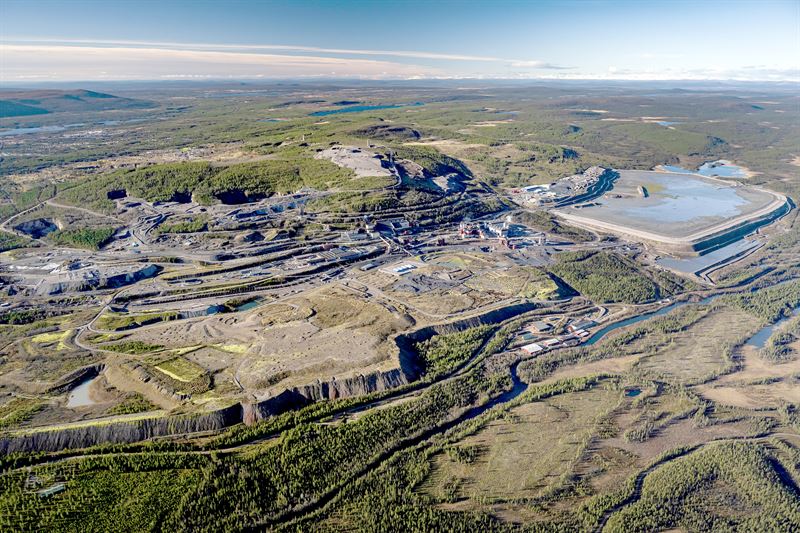Maptek VisionV2X technical lead Craig Domoney explains the technology behind the underground safety system and how Maptek guides and supports implementation on site.
Maptek VisionV2X is a simple solution with an important mission: to help keep all personnel and vehicles safe while working underground.
Maptek has leveraged automotive proximity awareness technology proven to operate reliably underground to develop a non-line-of-sight (NLOS) detection system compliant with global Earth Moving Equipment Safety Round Table (EMESRT) safety controls.
An intuitive interface alerts vehicle operators when other vehicles and pedestrians come within range, allowing them to take action to avoid collisions.
Keeping people safe
VisionV2X targets the safety and compliance obligations of mine managers, operations managers and site supervisors.
At head office, management oversees company safety and regulatory compliance, while also being responsible for governance, commercial supply chain and budgets. A detection system must deliver on both safety and productivity.
VisionV2X can provide timely, accurate information to the shift management team for decision making aided by remote visualisation of every corner of the mine operations.
The underground foreperson is under production pressure for their crew to deliver tonnage or volumes. They are also responsible for crew safety. It is important that the system is available and operating reliably with a high uptime so that productivity is not negatively impacted.
Mobile equipment operators are the end users of VisionV2X. Operating large vehicles underground, in dark, noisy and confined spaces, they rely on systems that provide clear visual and audible awareness of pedestrians and equipment around them.
The tech behind VisionV2X
An important differentiator for VisionV2X is being designed and developed for underground conditions.
The ergonomic in-cab tablet has fulfilled its human experience design objectives as an easy-to-use human machine interface (HMI), having been operating successfully in large vehicles underground for more than two million vehicle hours.
VisionV2X uses dedicated short-range communication (DSRC), giving metre accuracy and range detection of up to 100 metres out of direct sight. The long-range detection capability means that operators have enough time to react safely, even when travelling at the maximum allowable speed.
The system is independent of external infrastructure such as wifi, power, global navigation satellite system, and network. It can operate anywhere in the mine to constantly provide awareness of personnel and vehicles entering at-risk zones.
Optional road side unit (RSU) hardware infrastructure can also be installed at fixed locations to identify absolute positions of moving objects, and can detect cap lamps at 60 metres and vehicles at 100 metres.
The local object (LO) is the DSRC-enabled object that detects and records the data. The remote object (RO) – either a vehicle, a cap lamp or a fixed location (RSU) – is the object that is being detected.
DSRC is highly resilient to electromagnetic interference and signal obstruction, reliably transmitting the precise vehicle location, speed and direction many times per second to every other device within range.
Automated and real time internal checks ensure that the VisionV2X system is operating correctly.
| Cap lamp / belt | The VisionV2X module is typically integrated into a cap lamp, or as a separate belt-worn unit. The module is DSRC-enabled and able to be detected by VisionV2X as a remote object. |
| DSRC (802.11p) | Dedicated short-range communication wireless communication technology operating over radio protocol 802.11p. |
| HMI | The human machine interface is a touch-sensitive screen installed in vehicle cabs to display VisionV2X information to operators. |
| RSU | Optional hardware infrastructure that can be installed at fixed locations to identify absolute positions of moving objects. |
| LO | The local object is the DSRC-enabled object that detects and records the data. All collected data is from the perspective of an LO. |
| RO | The remote object is the DSRC-enabled object that is being detected. This is either a vehicle, a cap lamp or a fixed location (RSU). |
Installation and usage
VisionV2X can be installed on existing and mixed manufacturer fleets. Operations will not need to swap out systems when their fleet changes or use multiple safety systems from different OEMs. The hardware is robust, with minimal components allowing for easy installation and maintenance.
Site implementation involves a proof-of-concept followed by a 4-week vehicle pilot program. Specialist personnel provide installation, commissioning, decommissioning and performance reports. Maptek can configure VisionV2X to the site traffic and safety plans and set up a change management program to ensure a smooth implementation. System training covers the VisionV2X interface and protocols for dealing with visual and audible alerts indicating at-risk personnel and vehicles.
The rugged HMI tablets are installed in cabs of heavy vehicles, with pedestrian location enabled via the standard helmet or belt PPE worn by underground workers.
Detailed proximity data is logged and sent to a central server for analysis to aid in continuous improvement and maintain a safe working environment.
Maptek is excited to help mines install and implement underground technology systems that protect workers and equipment while also enhancing overall productivity. Maptek’s approach to development is based on understanding needs and working with sites to come up with the best solution.
Contact Maptek to learn more about the VisionV2X.




